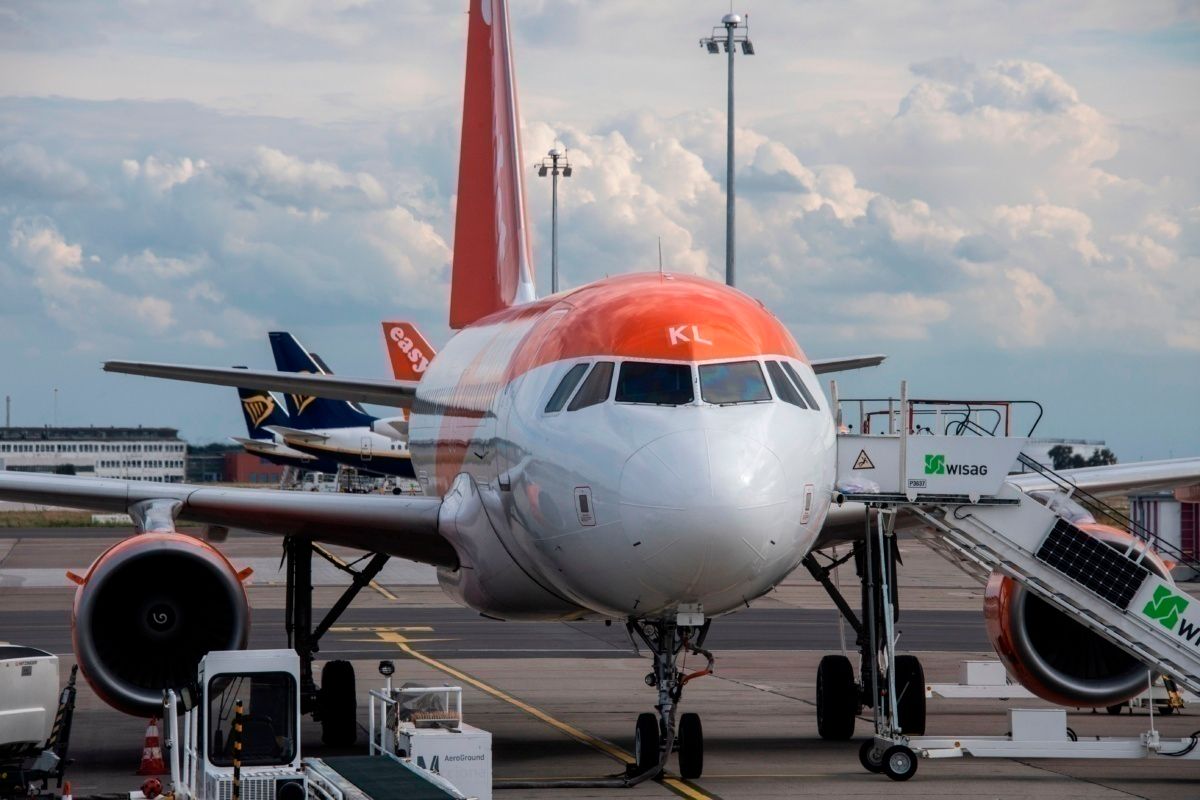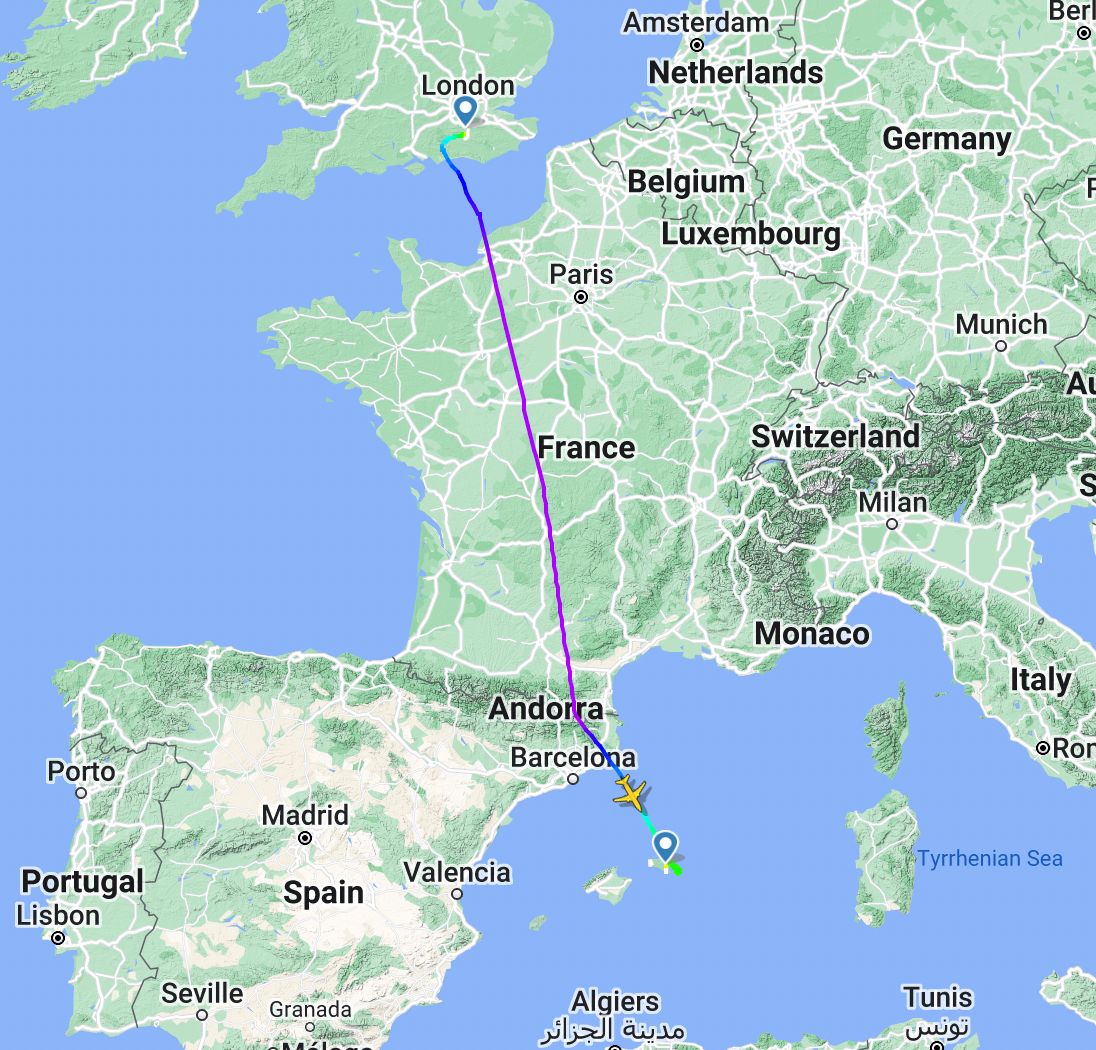easyJet
- IATA/ICAO Code
- U2/EZY (UK) |EC/EJU (Europe) |DS/EZS (Switzerland)
- Airline Type
- Low-Cost Carrier
- Hub(s)
- Amsterdam Schiphol Airport, Berlin Brandenburg Airport, Geneva Airport, London Gatwick Airport, London Luton Airport, Milan Malpensa Airport
- Year Founded
- 1995
- CEO
- Johan Lundgren
Passengers on an easyJet flight from Gatwick to Menorca yesterday were surprised to see a Spanish fighter jet come alongside. When the fighter jet started rocking its wings, some onboard would have known this was not a drill. Here is what it looked like from inside the easyJet A319:
After becoming aware of the situation last night, Simple Flying contacted easyJet for an update. The airline replied:
“easyJet can confirm flight EZY8303 from London Gatwick to Menorca was escorted by military aircraft while landing in Menorca and delayed disembarking due to precautionary security checks. The passengers have since disembarked. The safety and security of its passengers and crew is always easyJet’s highest priority and we would like to thank passengers for their understanding”.
Scrambling fighter jets is not done lightly
According to flightradar24.com, easyJet flight U28303, operated by an Airbus A319-100 registration G-EZAO, departed London Gatwick (LGW) close to an hour late at 13:36. The 800-mile (1,300 km) flight took 2:08 hours, landing on the Spanish island of Menorca at 16:44, around 30 minutes late. The scheduled turnaround time was 40 minutes, but the aircraft was on the ground at Menorca Airport (MAH) for about 3:51 hours. It departed MAH at 20:35 and landed at Gatwick at 21:29, more than three hours late.
Flightradar24.com
Planespotters.net data shows easyJet has 56 Airbus A319-100s with an average age of 14.4 years, although G-EZAO is slightly older at 16.2 years old. It was delivered to easyJet in May 2006 and has the standard one-class layout of 156 seats. The rest of the Airbus fleet comprises 67 A320-200s, 33 A320neos and ten A321neos. Only four aircraft are listed as parked, with 162 currently in service.
There are plenty of rules about intercepting civilian aircraft
Using fighter jets to intercept a large civilian airliner is inherently risky but in this case, the pilots in both aircraft followed procedures to a safe outcome. Photo: easyJet
While most will know that the appearance of a fighter jet at your wingtip generally means “follow me,” EASA has four pages of instructions in its ‘Acceptable Means of Compliance Material to the rules of the air’ publication. Conversely, the US Federal Aviation Administration (FAA) publishes a one-page flyer titled ‘In-Flight Intercept Procedures’, although the complete procedures are in the Aeronautical Information Manual. The FAA procedure is that two fighter jets approach from the rear, with one remaining while the other approaches the aircraft, usually on the right side, to make visual contact. The intercepted aircraft should rock its wings to acknowledge the interception, and the fighter jet will do a slow turn, indicating the direction for the intercepted aircraft to follow.
Radio contact should be initiated ahead of the interception, and EASA says, “Interception of civil aircraft should be avoided and should be undertaken only as a last resort.” The EASA guidance also states that aircraft fitted with an ACAS (airborne collision avoidance system) may perceive the interceptor as a collision threat and initiate an avoidance measure. The guide says that “such a manoeuvre might be misinterpreted by the interceptor as an indication of unfriendly intentions,” adding that the intercepting pilot needs to keep in mind that “manoeuvres considered normal to an intercepting aircraft may be considered hazardous to passengers and crews of civil aircraft.”
EASA also adds that using tracer bullets to attract attention is “hazardous, and it is expected that measures will be taken to avoid their use.” While the passengers on the easyJet don’t seem alarmed, interceptions are serious and can be inherently risky to the safety of the aircraft and those onboard, particularly in today’s climate. If the reasons that triggered the interception come to light, we will add them to this article.
Have you ever been on a flight intercepted by fighter jets?
Discover more aviation news here.



.jpg)


